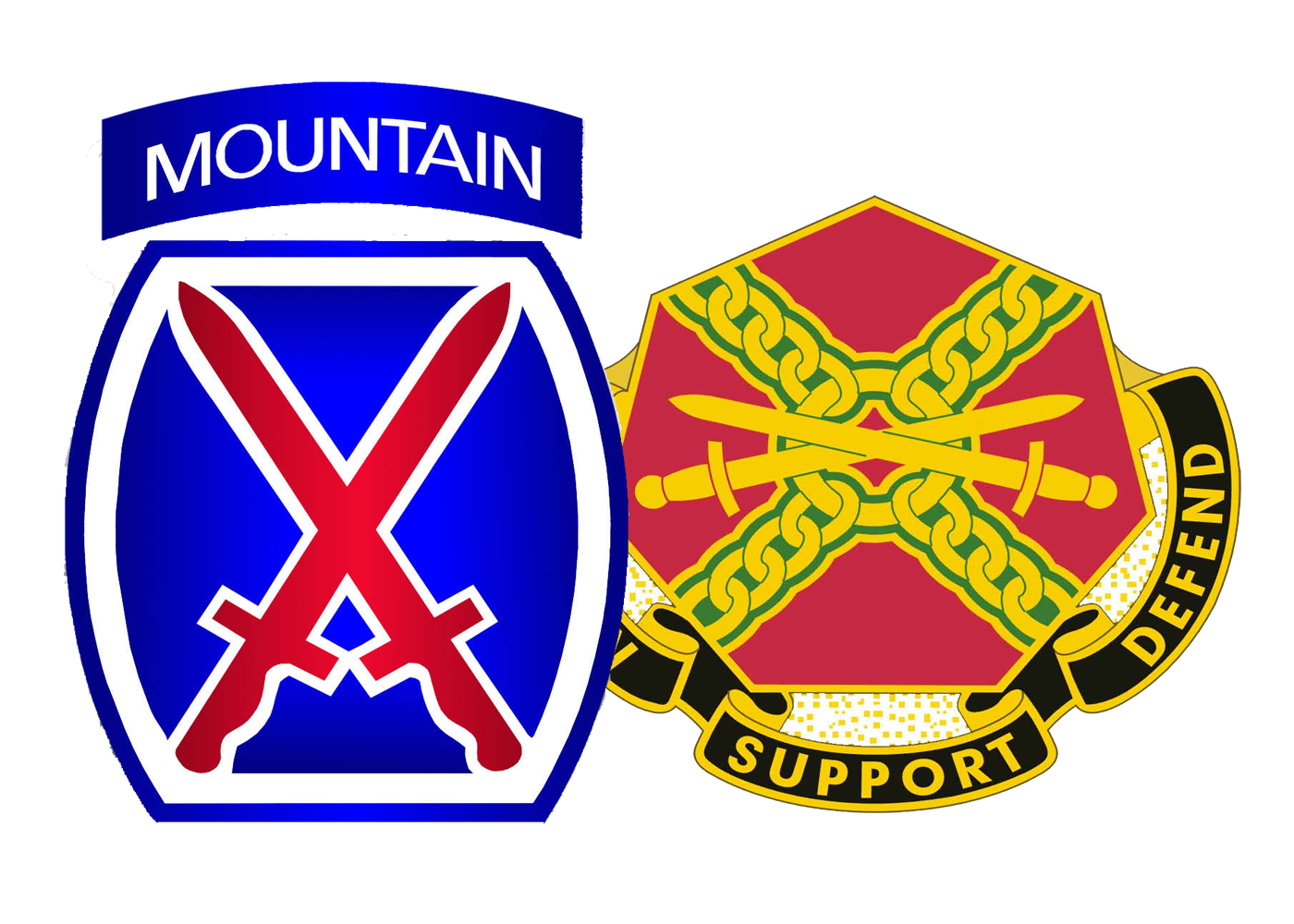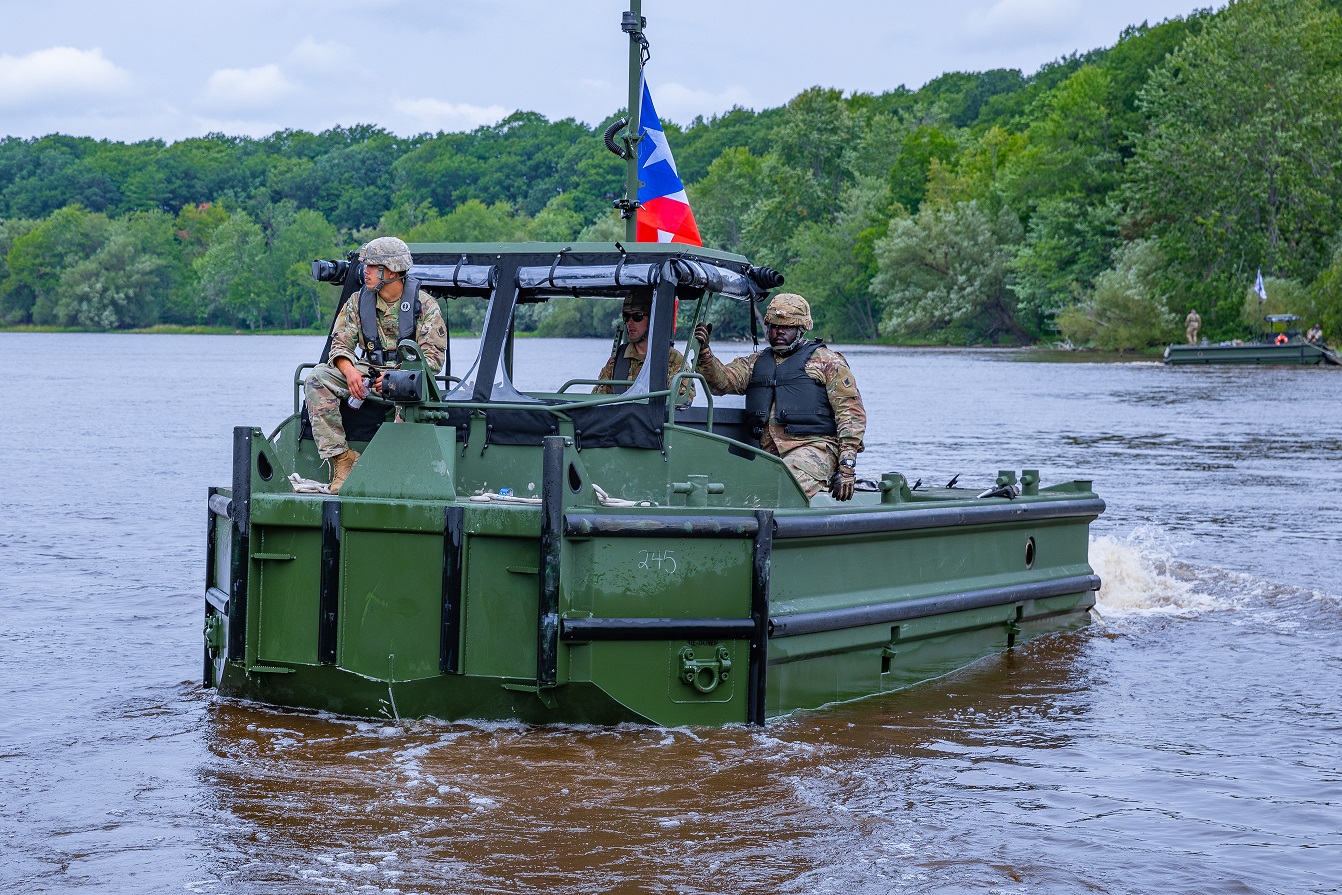
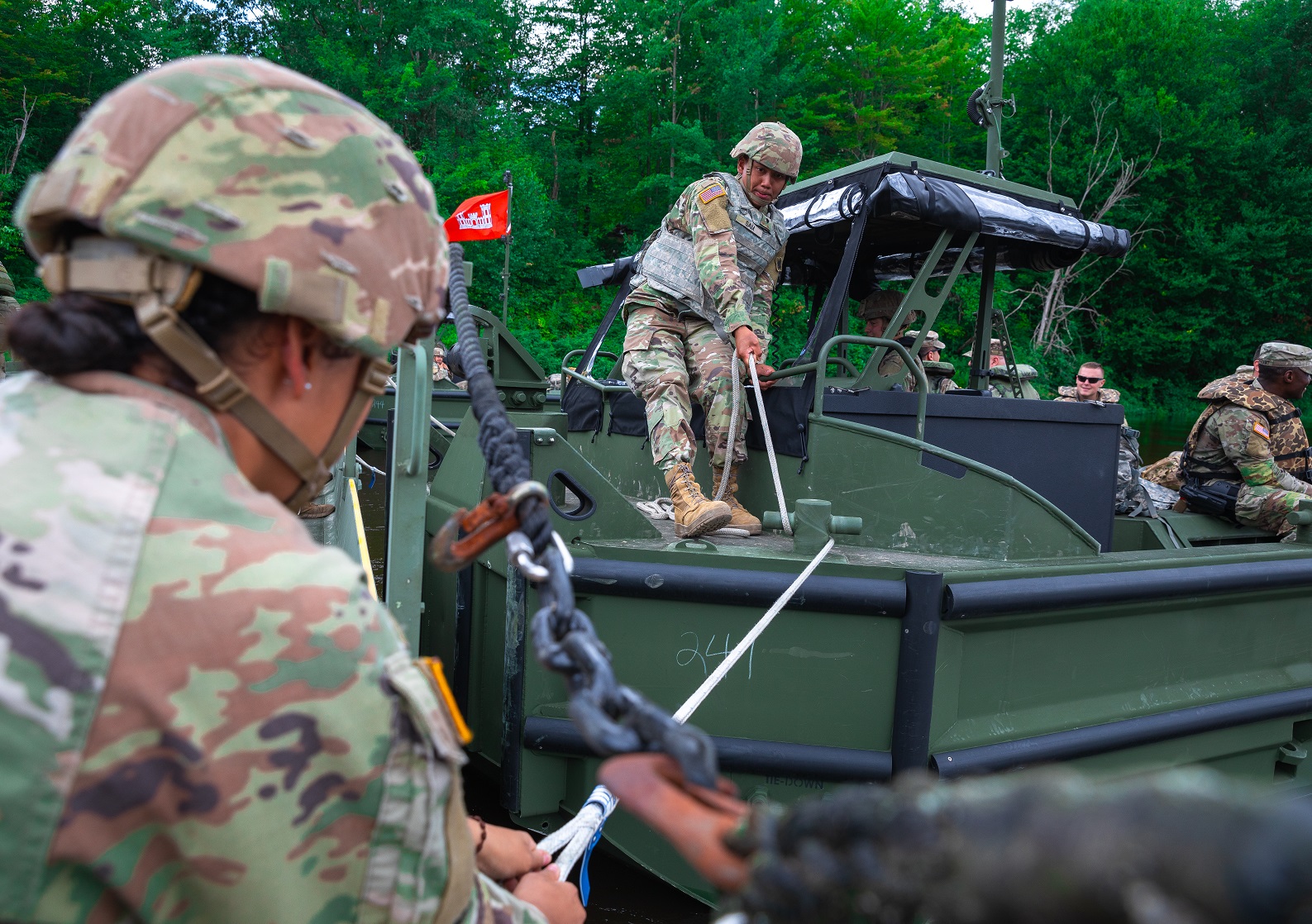
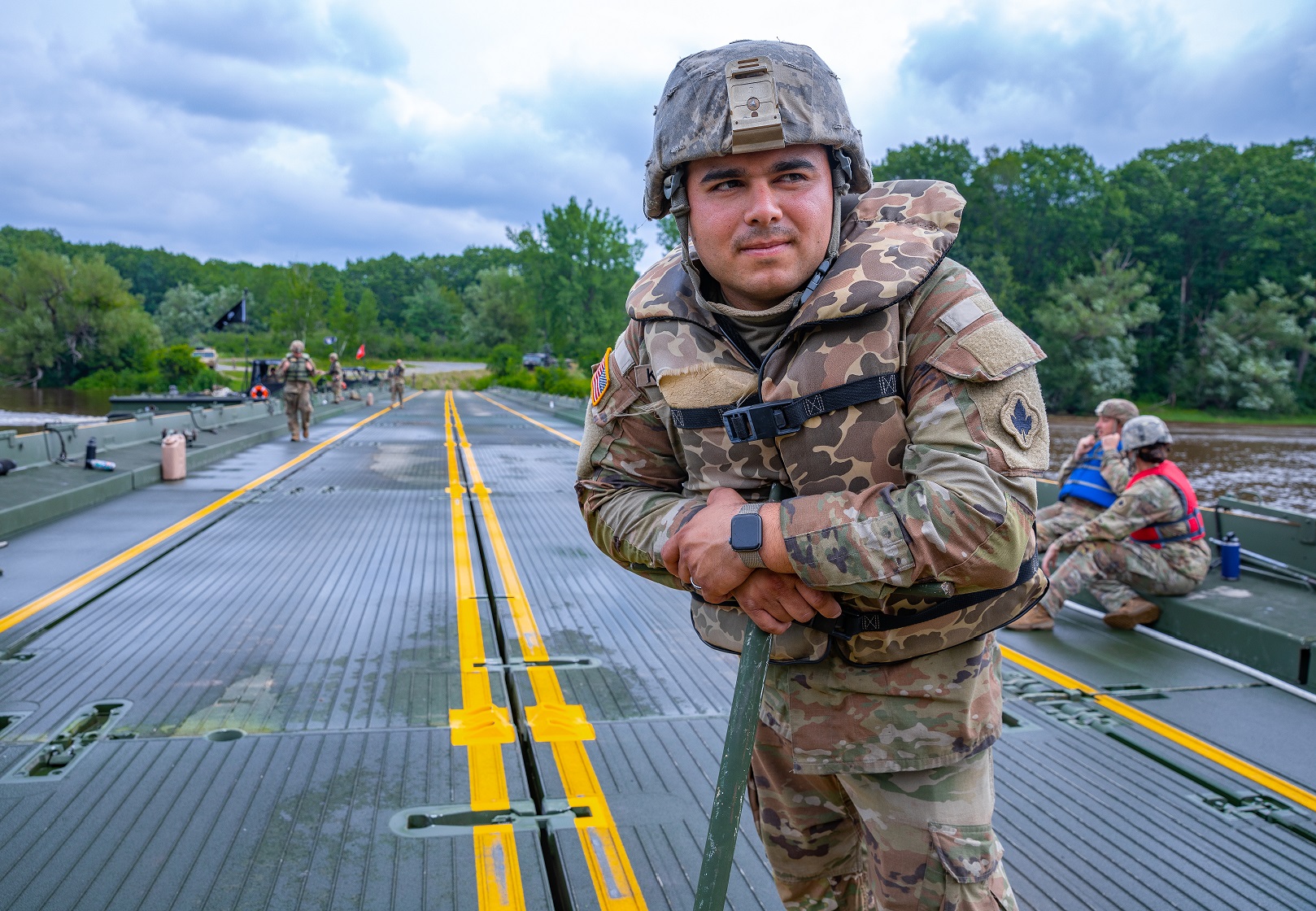
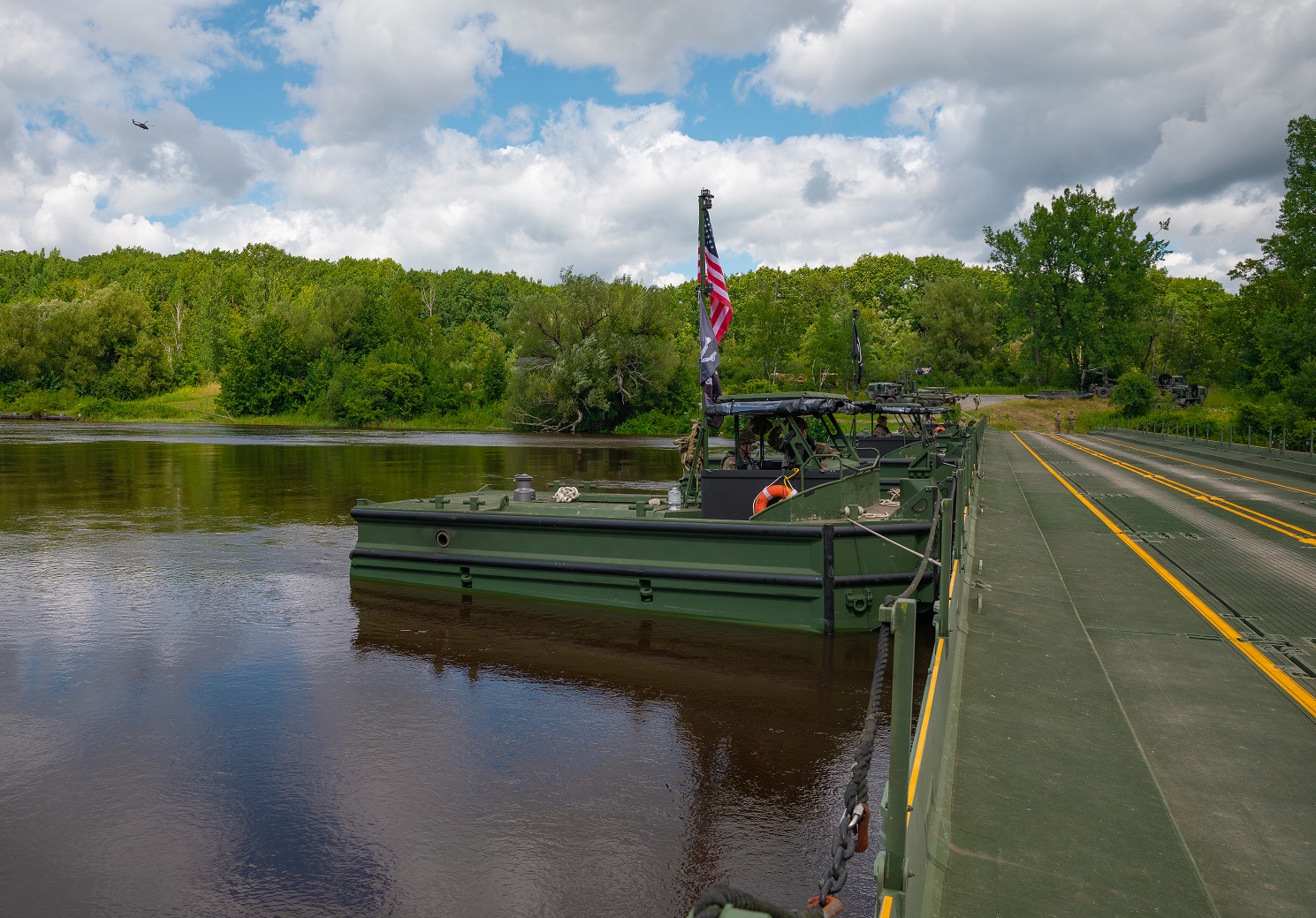
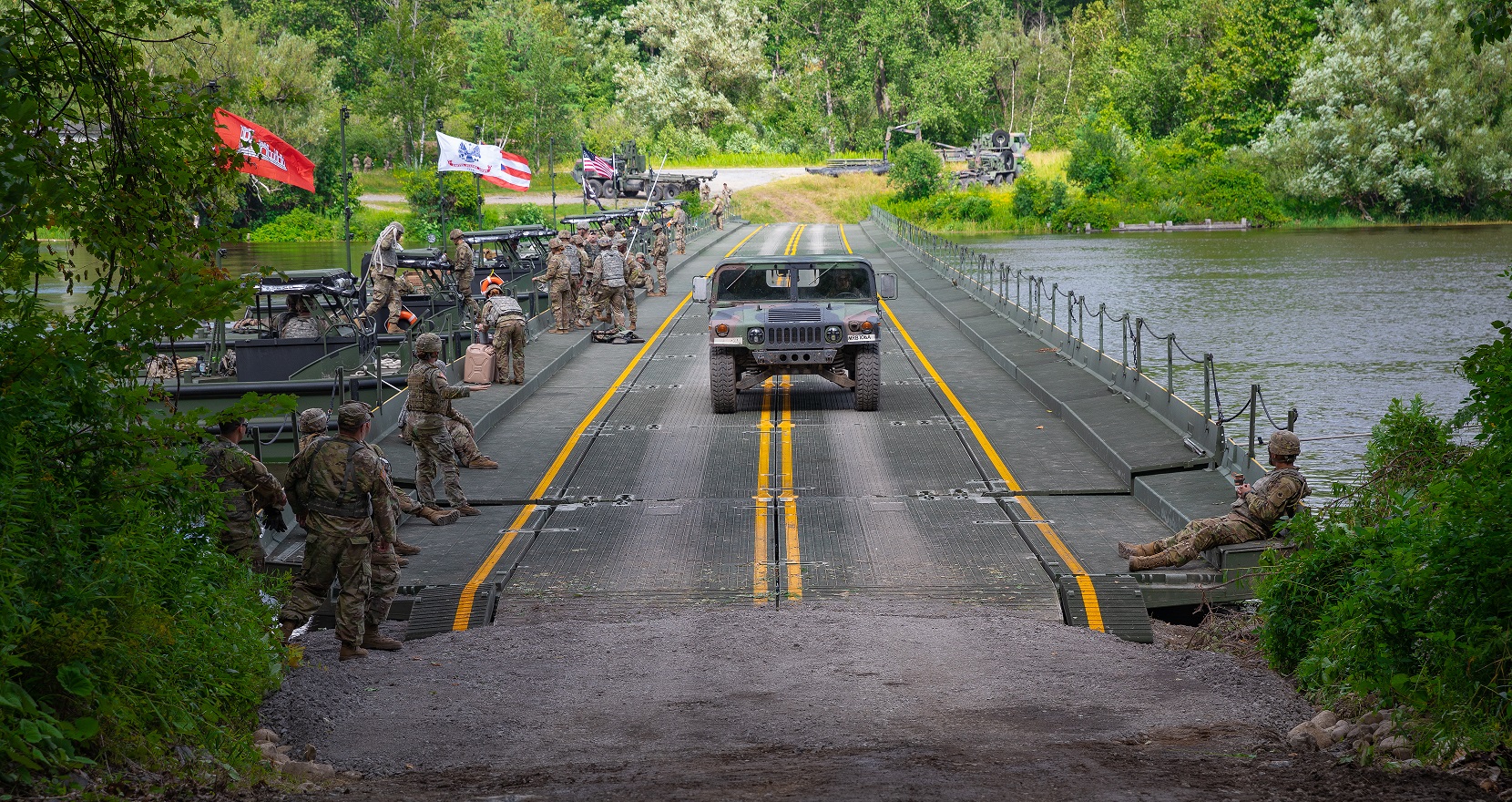
From top left: Crewmembers from the 250th Engineer Company (Multi-Role Bridge Company), 192nd Engineer Battalion, Connecticut Army National Guard secure a Bridge Erection Boat to a section of an Improved Ribbon Bridge at Fort Drum, New York. Bridge Erection Boats are used to ferry sections of the bridge into place and keep the bridge, when fully assembled, from floating off site due to the current. A Bridge Erection Boat operated by Soldiers from the 250th Engineer Company pulls away from a section of an Improved Ribbon Bridge. Spc. Ethan Kanlong, a bridge crewmember assigned to the 250th Engineer Company, stands atop an Improved Ribbon Bridge at Fort Drum. Soldiers from the 250th Engineer Company set up an Improved Ribbon Bridge across the Black River at Fort Drum, so units of the 143rd Regional Support Group could conduct a wet gap crossing during their annual training. A Connecticut Army National Guard High Mobility Multipurpose Wheeled Vehicle, or Humvee, crosses over an Improved Ribbon Bridge, which can support two-way traffic with vehicles of Humvee width. (U.S. Army photos by Sgt. Matthew Lucibello)
Connecticut's 250th Engineer Company builds Improved Ribbon Bridge during annual training
Sgt. Matthew Lucibello
130th Public Affairs Detachment
FORT DRUM, N.Y. (Aug. 31, 2023) – In combat, having the freedom to maneuver can directly affect the outcome of a battle. Rough terrain, or in this case, a deep, wide river with a powerful current, can impede or even fully stop Soldiers in their tracks. To overcome this obstacle and continue with the mission, Connecticut’s Home Team calls in the engineers.
And not just any engineers. Connecticut calls on Soldiers from the 250th Engineer Company (Multi-Role Bridge Company) based out of New London. These men and women, bridge crewmembers, have the necessary skills and equipment to assemble Improved Ribbon Bridges, which allows their fellow Soldiers and their vehicles to cross rivers safely and efficiently.
The unit traditionally trains to cross rivers, known officially as a wet gap crossing, on the Thames River back home. However, these Soldiers really showcased their skills during their recent annual training at Fort Drum, New York, where they set up an Improved Ribbon Bridge across the turbulent Black River, a river so dangerous in some areas that Fort Drum and the 10th Mountain Division (LI) forbids their Soldiers from swimming in it.
Improved Ribbon Bridges are formed from components of the IRB Float Ribbon Bridge System, which uses interior bays and ramp bays to create a bridge that can support the weight of up to 110 wheeled or 90 tracked tactical vehicles.
“This current is very strong,” said Connecticut Army National Guard Spc. Ethan Kanlong, one of the bridge crewmembers. “We’re using all our boats right now. You’re supposed to have one (boat) every three or four bays to keep control of (the bridge).”
The crossing took eight of the company’s boats. The ones that weren’t being used to support the bridge and keep it from flowing down the river paced up and down by the launching site, picking up sections of the bridge and ferrying them to be collected and assembled. After all the bays were put together, the boats then shifted the bridge into place.
After the bridge was set and in position, units from across the 143rd Regional Support Group used the bridge as part of their combined training mission. Some of these vehicles included Humvees carrying troops and military ambulances transporting simulated casualties from the training area to medical centers.
“This is the biggest one we do,” Kanlong said. “It’s cool to see something we built work. That’s the job. We build the bridge, we take it apart, keep moving.”





